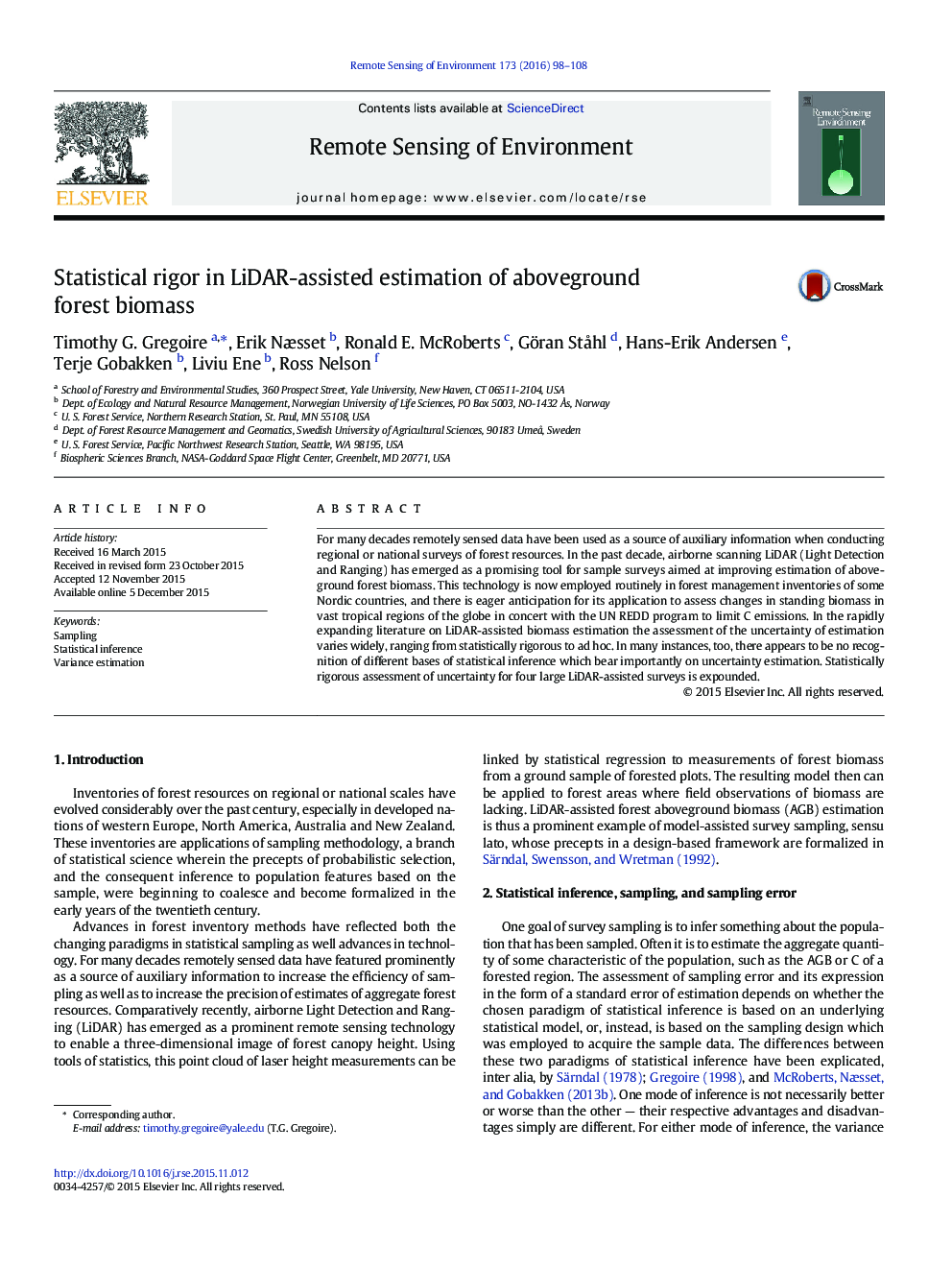| کد مقاله | کد نشریه | سال انتشار | مقاله انگلیسی | نسخه تمام متن |
|---|---|---|---|---|
| 6345651 | 1621227 | 2016 | 11 صفحه PDF | دانلود رایگان |

- The distinction between design-based and model-based inference is expounded.
- The statistical basis for rigorous variance estimation using the precepts of survey sampling is presented.
- Examples of design-based and model-based inference for a large LiDAR-assisted studies is presented.
For many decades remotely sensed data have been used as a source of auxiliary information when conducting regional or national surveys of forest resources. In the past decade, airborne scanning LiDAR (Light Detection and Ranging) has emerged as a promising tool for sample surveys aimed at improving estimation of above-ground forest biomass. This technology is now employed routinely in forest management inventories of some Nordic countries, and there is eager anticipation for its application to assess changes in standing biomass in vast tropical regions of the globe in concert with the UN REDD program to limit C emissions. In the rapidly expanding literature on LiDAR-assisted biomass estimation the assessment of the uncertainty of estimation varies widely, ranging from statistically rigorous to ad hoc. In many instances, too, there appears to be no recognition of different bases of statistical inference which bear importantly on uncertainty estimation. Statistically rigorous assessment of uncertainty for four large LiDAR-assisted surveys is expounded.
Journal: Remote Sensing of Environment - Volume 173, February 2016, Pages 98-108